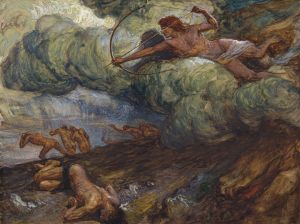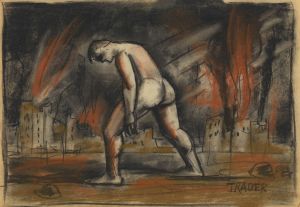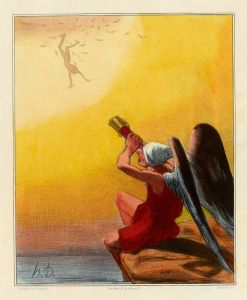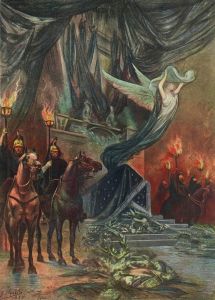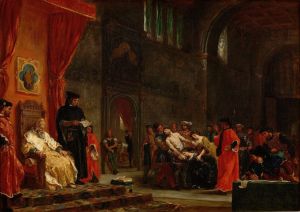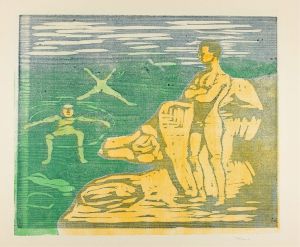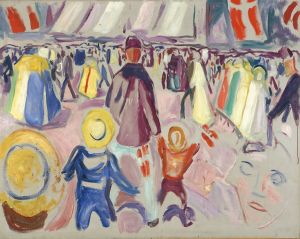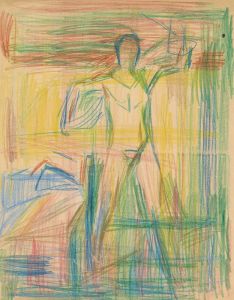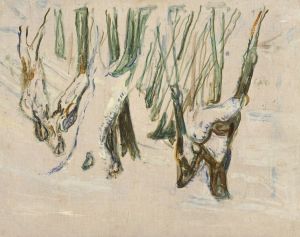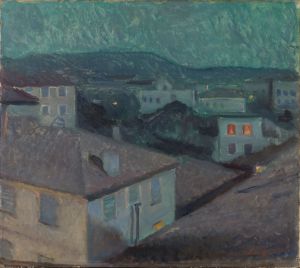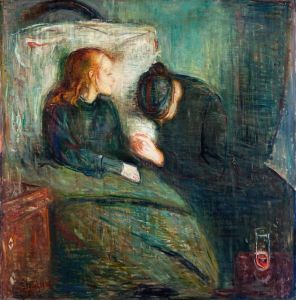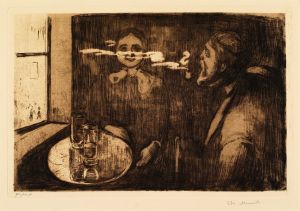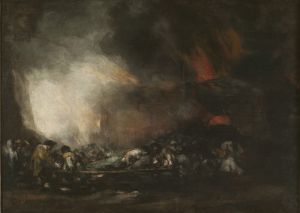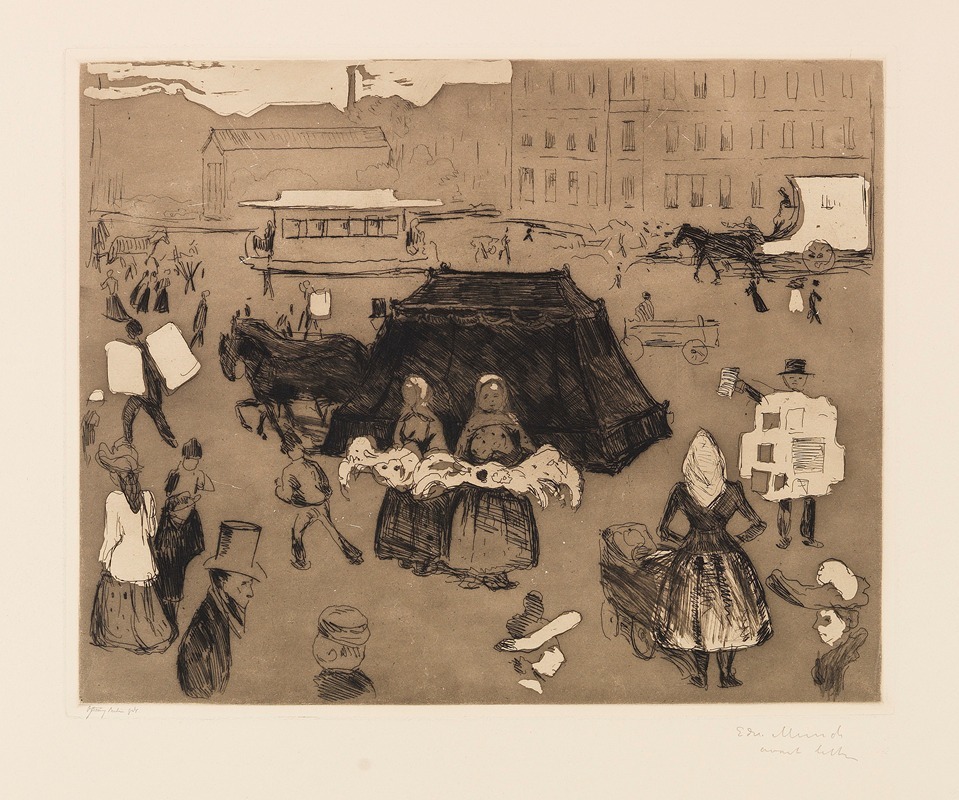
Der Leichenwagen. Potsdamer Platz
A hand-painted replica of Edvard Munch’s masterpiece Der Leichenwagen. Potsdamer Platz, meticulously crafted by professional artists to capture the true essence of the original. Each piece is created with museum-quality canvas and rare mineral pigments, carefully painted by experienced artists with delicate brushstrokes and rich, layered colors to perfectly recreate the texture of the original artwork. Unlike machine-printed reproductions, this hand-painted version brings the painting to life, infused with the artist’s emotions and skill in every stroke. Whether for personal collection or home decoration, it instantly elevates the artistic atmosphere of any space.
"Der Leichenwagen. Potsdamer Platz" (The Hearse. Potsdamer Platz) is a painting by the renowned Norwegian artist Edvard Munch. Munch, best known for his iconic work "The Scream," was a pivotal figure in the Symbolist and Expressionist movements. His works often explore themes of existential angst, human emotion, and the human condition.
"Der Leichenwagen. Potsdamer Platz" was created during a period when Munch was deeply influenced by the urban environment and the psychological impact of modern life. Potsdamer Platz, located in Berlin, was a bustling hub of activity and a symbol of modernity in the early 20th century. This location, with its dynamic atmosphere, provided a stark contrast to the somber subject matter of the painting.
The painting depicts a hearse, a vehicle used for transporting the deceased, set against the backdrop of Potsdamer Platz. The juxtaposition of the hearse with the lively urban setting creates a powerful commentary on the inevitability of death amidst the vibrancy of life. Munch's use of color and form in this painting is characteristic of his style, with bold, expressive strokes and a somewhat distorted perspective that heightens the emotional impact of the scene.
Munch's time in Berlin was a significant period in his artistic development. He moved to the city in the late 19th century and became associated with the Berlin Secession, a group of artists who broke away from traditional academic art institutions to pursue more avant-garde approaches. During his stay, Munch was exposed to new ideas and influences that shaped his work, including the burgeoning Expressionist movement.
"Der Leichenwagen. Potsdamer Platz" reflects Munch's ongoing exploration of themes related to mortality, urbanization, and the human psyche. The painting is part of a broader body of work in which Munch delves into the complexities of modern existence, often highlighting the tension between life and death, and the isolation felt by individuals in a rapidly changing world.
Munch's work has had a lasting impact on the art world, influencing subsequent generations of artists. His ability to convey deep emotional experiences through his distinctive style has cemented his place as one of the most important figures in modern art. "Der Leichenwagen. Potsdamer Platz" is a testament to Munch's skill in capturing the profound and often unsettling aspects of human life.
Today, Edvard Munch's paintings are celebrated in museums and collections around the world. His exploration of existential themes continues to resonate with contemporary audiences, making his work as relevant now as it was during his lifetime. "Der Leichenwagen. Potsdamer Platz" remains an important piece within Munch's oeuvre, exemplifying his unique approach to art and his ability to evoke powerful emotional responses through his work.





